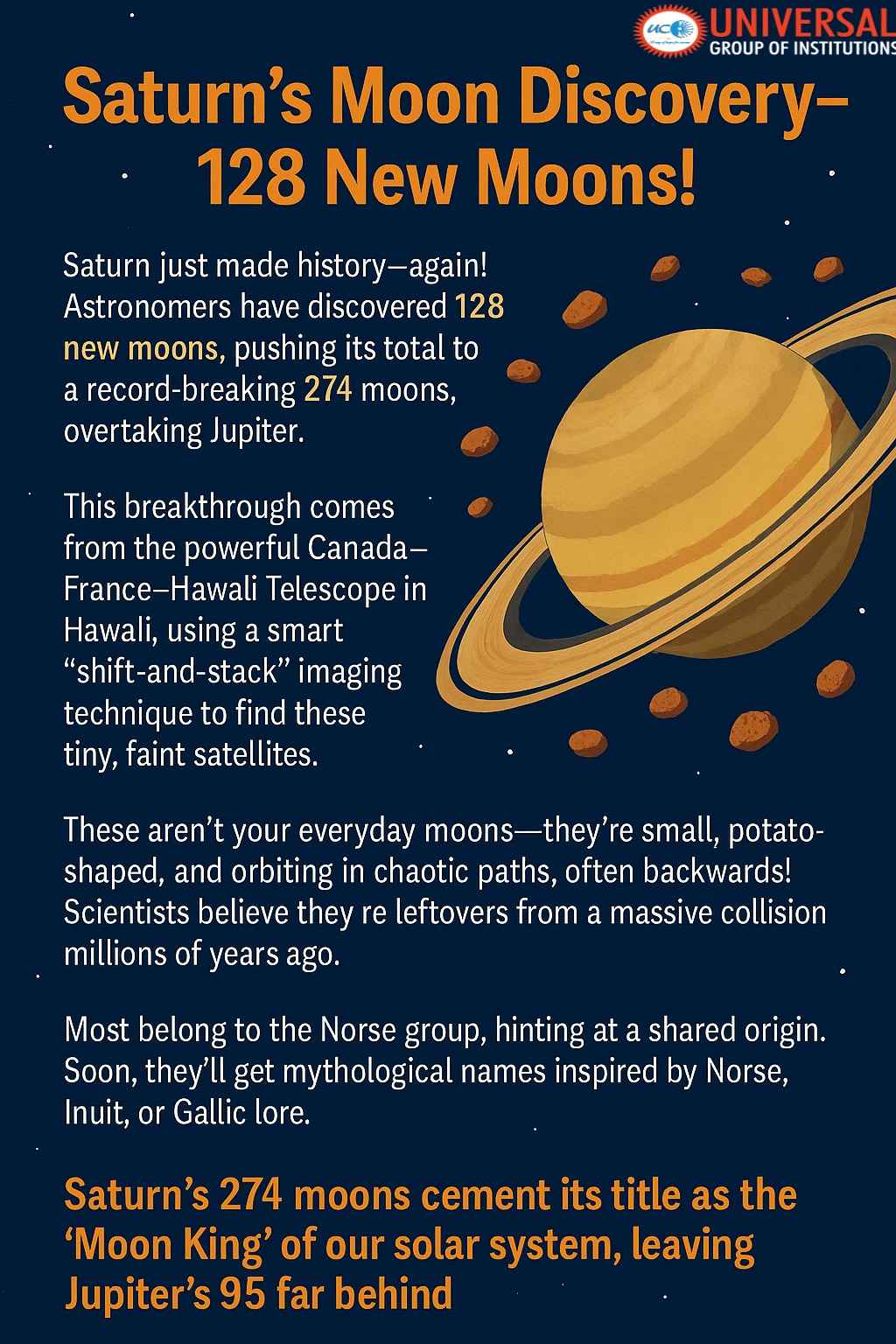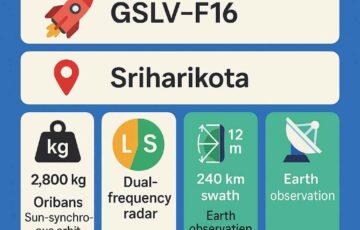Saturn’s Moon Explosion: 128 New Moons Discovered, Saturn Becomes the Moon King of the Solar System
Saturn’s Moon Explosion: 128 New Moons Discovered, Saturn Becomes the Moon King of the Solar System
In a remarkable leap for planetary astronomy, Saturn planet has officially claimed the crown as the planet with the most moons in our solar system, with a total tally of 274 confirmed natural satellites. This record-breaking astronomical discovery—an addition of 128 Saturn new moons—was made possible through advancements in observation technology and analytical techniques. The question of “how many moons does Saturn have” has been definitively answered, solidifying Saturn’s position as the true moon king of our cosmic neighborhood. This discovery has significantly expanded our understanding of the moon and Saturn relationship, far surpassing the previously known all 62 moons of Saturn, including the well-known Titan, Enceladus, and Iapetus.
How Were These Moons Found? The Shift-and-Stack Revolution
The discovery of these Saturn new moons was led by a team of astronomers using the Canada France Hawaii telescope (CFHT) located atop Mauna Kea in Hawaii. The team employed a cutting-edge technique known as the “shift-and-stack technique”, which is revolutionizing the way faint and distant celestial bodies are detected.
This method involves:
- Capturing dozens to hundreds of short-exposure images of Saturn over a period of time.
- Digitally aligning these images based on a predicted motion path of a potential moon.
- Stacking the aligned images together, enhancing faint signals, and revealing objects that would be invisible in a single image.
With this method, even tiny, dim moons—some just 2.5 kilometers across—became detectable, despite being billions of kilometers from Earth. This breakthrough in Saturn’s moon exploration has significantly increased the known Saturn satellites number, including many irregular moons such as those in the Norse group and the Gallic group.
What Are These Moons Like? Not Your Regular Spherical Satellites
Unlike Saturn’s large moons, such as Titan (Saturn’s largest moon and what is the largest moon of Saturn), Enceladus with its subsurface ocean, or Iapetus with its distinctive two-toned surface, the newly discovered moons are:
- Small and irregularly shaped satellites, often described as potato-like.
- Orbiting at vast distances from Saturn, in chaotic or retrograde orbits (moving backward relative to the planet’s rotation).
- Believed to be remnants of ancient moon collisions, possibly the result of gravitational interactions or past cataclysmic events involving larger moons.
These irregular moons provide valuable insights into the formation and evolution of Saturn’s complex moon system, including the Saturnian satellite system as a whole. Among these irregular moons, Phoebe stands out as a particularly intriguing object due to its retrograde orbit and unique composition.
The Norse Group: A Common Origin?
Most of the new moons belong to a class known as the Norse group—a set of retrograde irregular moons with similar orbital characteristics. This grouping suggests a common origin, possibly from a single large moon that broke apart millions of years ago. The Norse group moons have become a focal point for understanding the complex interactions within Saturn’s satellite system. Other groups include:
- Inuit group (prograde orbits, distant but less inclined),
- Gallic group (somewhat closer orbits with distinct orbital inclinations).
The discovery of these orbital groups, including the Norse group and Gallic group moons, has shed new light on the dynamics of Saturn’s moon system and its evolution over time. The Norse group, in particular, has become crucial for understanding the complex interactions within Saturn’s satellite system, with Phoebe being a prime example of the group’s unique characteristics.
What Will They Be Called? Mythology Meets Astronomy
Astronomical naming conventions require that moons of Saturn be named after mythological giants or figures from Norse, Inuit, and Gallic traditions. The new moons will soon receive unique names, continuing the tradition of combining cultural heritage with scientific discovery. Examples from past naming include:
- Skathi (Norse goddess),
- Siarnaq (Inuit mythology),
- Albiorix (Gallic mythology).
A public naming campaign, similar to past events, may also be held to engage space enthusiasts worldwide in this exciting Saturn moon discovery. This process often involves naming moons from the Norse group after figures from Norse mythology, further emphasizing the connection between astronomy and cultural heritage.
Saturn vs Jupiter: Who’s the Real Moon King?
Until recently, Jupiter held the lead in the moon count with 95 confirmed moons (as of 2023). However, Saturn has now pulled far ahead with 274 moons—nearly three times as many. This astronomical rivalry reflects not just scientific progress, but the dynamic, ever-evolving nature of our understanding of the solar system. The question “which planet has the most moons” has been definitively answered: Saturn planet reigns supreme, with its diverse collection of moons including the massive Titan, the icy Enceladus, the two-toned Iapetus, and the numerous moons of the Norse group, including the intriguing Phoebe.
|
Planet |
Moons (2025) |
|
Saturn |
274 |
|
Jupiter |
95 |
|
Uranus |
27 |
|
Neptune |
14 |
|
Mars |
2 |
|
Earth |
1 |
Why It Matters: What Moons Tell Us About Planetary History
These small, irregular moons may seem insignificant compared to giants like Titan or Iapetus, but they hold critical clues about:
- The formation and evolution of Saturn’s gravitational environment.
- The violent early history of the solar system, marked by collisions and moon fragmentation.
- The role of gas giants in shaping planetary systems, including those around distant stars.
Understanding the total moons of Saturn and their characteristics provides valuable insights into the planet’s history and the dynamics of its complex satellite system. The study of these moons, including the Norse group and Gallic group, can also shed light on processes like planetary migration and the formation of planetary rings. Phoebe, as a member of the Norse group, offers unique insights into the early solar system due to its retrograde orbit and composition.
Looking Ahead: More Discoveries Await
With technology rapidly advancing—especially in optical imaging, AI-driven analysis, and space telescopes like JWST and the upcoming Thirty Meter Telescope (TMT)—we can expect even more moon discoveries in the coming years, not just around Saturn but across the solar system.
As astronomer Dr. Brett Gladman, one of the researchers involved, stated, “The more we look, the more we find. The story of Saturn’s moons is far from over.” This sentiment is echoed by fellow researcher Dr. Mike Alexandersen, who emphasizes the importance of continued exploration of Saturn’s moon system, including the fascinating Norse group moons and unique objects like Phoebe.
Saturn’s Ring System and Its Connection to Moons
While this article focuses on Saturn’s moons, it’s worth noting the intricate relationship between these satellites and Saturn’s ring system. The planet’s iconic planetary rings are composed of countless small particles, ranging from tiny dust grains to larger moonlets. These moonlets, some just a few kilometers in diameter, play a crucial role in shaping and maintaining the structure of Saturn’s rings.
The Cassini mission, which ended in 2017, provided unprecedented views of Saturn’s rings and moons, revealing the complex interactions between these celestial bodies. The spacecraft’s observations showed how some of Saturn’s moons, particularly the shepherd moons, help maintain the sharp edges of the rings through their gravitational influence. This interplay between moons and rings highlights the dynamic nature of the Saturnian satellite system, including the role of moonlets in maintaining ring structure and the influence of larger moons like Titan and Enceladus on the overall system.
Historical Context: From Huygens to Modern Day
The discovery of Saturn’s moons has a rich history dating back to the 17th century:
- In 1655, Christiaan Huygens discovered Titan, Saturn’s largest moon.
- Giovanni Domenico Cassini discovered four more major moons between 1671 and 1684.
- William Herschel discovered Mimas and Enceladus in 1789.
- The Voyager spacecraft missions in the 1980s significantly increased our knowledge of Saturn’s moon system.
Each new discovery, from the early observations to the recent findings using the shift-and-stack technique, has contributed to our understanding of Saturn’s complex satellite system and its place in the solar system. The discovery of moons like Phoebe, with its retrograde orbit, has been particularly intriguing for scientists studying the Saturnian system. Phoebe’s unique characteristics have led researchers to believe it may be a captured object from the outer solar system, providing valuable insights into the early formation of our planetary neighborhood and the dynamics of the Norse group moons.
Conclusion: A New Era in Saturn Research
The discovery of 128 new moons around Saturn marks a significant milestone in planetary science. It not only cements Saturn’s status as the planet with the most moons but also opens up new avenues for research into planetary formation, satellite dynamics, and the history of our solar system.
As we continue to explore and study these newly discovered moons, including the fascinating Phoebe with its retrograde orbit and the numerous moons of the Norse group, we can expect to gain even more insights into the complexities of Saturn’s satellite system and its role in shaping the outer solar system. The study of these moons, their elliptical orbits, and their interactions with Saturn’s rings will undoubtedly lead to further astronomical discoveries.
This Saturn news has reignited interest in the ringed planet and its moons, promising exciting developments in the field of planetary science for years to come. From Titan’s thick atmosphere to Enceladus’s subsurface ocean, and from Iapetus’s two-toned surface to the mysterious Phoebe, the moons of Saturn continue to captivate scientists and space enthusiasts alike. The ongoing study of Saturn’s diverse moons, from the largest like Titan and Iapetus to the smallest irregular moons of the Norse group, will continue to unveil the secrets of our solar system’s history and evolution.
References:
- Minor Planet Center, International Astronomical Union – Moon tally data
- Canada–France–Hawaii Telescope (CFHT) official site – Observation techniques
- Brett Gladman et al., 2023 – Research publication on new Saturnian moons
- NASA Planetary Science Division – Naming conventions and planetary moon dynamics
- “Saturn Overtakes Jupiter as Moon King” – Sky & Telescope, May 2023
- BBC Science News – “Saturn’s Hidden Moons Discovered”
- Cassini mission data archive – NASA/JPL
- Jean-Marc Petit et al., 2022 – Study on collisional families in Saturn’s irregular moon population






